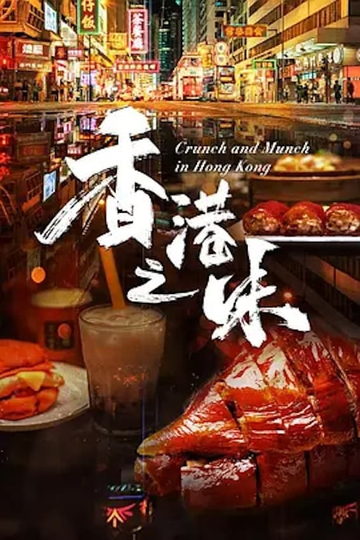Season 1 Episodes
1. Sea & Seafood
The main content of this episode is that Hong Kong is a city known for its fast pace, but in Pak Ni Village, Brother Hua spends 15 hours waiting for a net of fish. Late at night, the sea in Lau Fau Shan has fallen asleep, and another Hua Ge in Aberdeen has started a new day. At 4 a.m., the Aberdeen Fish Wholesale Market, the largest in Hong Kong, is in full operation. Hong Kong’s per capita annual seafood consumption exceeds 60 kilograms, 70% of which comes from Aberdeen. Being close to the water and knowing the nature of fish is the pride of the people of Hong Kong. People love the delicacies of the sea and the vitality that the sea brings.
2. Fast Food & Cafe
Cha chaan teng, is an inseparable part of Hong Kong people's lives. It is a habit that is repeated day after day, and everyone has their own routine. Neighbors have become regular customers. Xinhua Tea Restaurant is an old-fashioned two-story restaurant with quiet and elegant seats upstairs. This classic layout is very rare today. Hong Kong consumes nearly 1 billion cups of milk tea every year. This is the reason why the three words "Cha chaan teng" is started with Cha(Tea).
3. Metropolis with Street Food
It is said that in Hong Kong, 500,000 siomai are sold every day, including this street fish steamed siomai. If you want to stand out among 500,000 siomai, you may need a 1-meter-long pot and at least two and a half hours of effort, and you may also need to deviate a little from the light Cantonese flavour, but don't deviate too far.
4. Western Food, but Localized
Turning air, time and memory into food opens up a special sense of ritual. In the memory of many Hong Kong people, eating Western food with soy sauce was once a rare event in a year. Western food with soy sauce is a localized Western food that combines Cantonese ingredients with Western cooking. It is named because soy sauce is often used for seasoning. Soy sauce in Cantonese is soy sauce, and soybeans are the main ingredient. Various auxiliary ingredients are added to make a Western sauce that is more suitable for Hong Kong tastes, which is full of ritual and Hong Kong's pragmatism.
5. Fusion Cuisine
Zhou Siwei, the founder of Little Bao Restaurant, launched the Chinese-style three-yellow fried chicken buns. It is both an innovative dish and a fusion dish. Its concept can well express the characteristics of Hong Kong. Zheng Yongqi believes that the biggest common point between Chinese and French cuisine is abalone sauce. He uses traditional ingredients in Chinese abalone sauce and Western ideas to launch a dry abalone sauce without thickening.
6. Wonton Noodles
wontons, with their heads and tails, are like floating clouds in a sunny day, or goldfish swimming in the clouds. When paired with bamboo noodles that look like golden threads, it feels as if the clouds and light have entered one's heart. Every Hong Konger has a bowl of hometown wonton noodles in his heart, warm and hot, bringing a sense of home and spiritual satisfaction. A bowl of wonton noodles, wontons, noodles, and soup are all the soul, exquisite and memorable.
7. Tien Hisang Lo
Zhāngdàqiān tíxiě de biǎn'é, qǔ tángshī “tiānxiāng yún wài piāo” zhī yì, dāngnián yóu hángzhōu bān lái xiānggǎng, yě jiànzhèngle zhè jiā cāntīng báshè shānshuǐ xiāng piāo gǎng dǎo de wǎngshì. Ér tiānxiāng lóu de xiānggǎng chuánqí, zé kāishǐ yú shàng shìjì 50 niándài Show more 73 / 5,000 The plaque inscribed by Zhang Daqian is inspired by the Tang Dynasty poem "Heavenly fragrance drifting beyond the clouds". When the restaurant moved from Hangzhou to Hong Kong, it also witnessed the past of this restaurant traveling across mountains and rivers to spread its fragrance to Hong Kong Island. The legend of Tianxianglou in Hong Kong began in the 1950s.
8. Yuen Long & Hakka People
Ping Shan, Yuen Long, is an old village surrounded by green trees, representing the other side of Hong Kong, an international metropolis. The Tang family moved here from the mainland more than 700 years ago and now has a flourishing family.
9. The Classic Cantonese
Xu Weijun is a descendant of a famous Cantonese cuisine family. Some people say that he is a lonely Cantonese cuisine master because he is the only one who knows many flavors. But he has mastered the famous Cantonese cuisine recipes that can be passed down. The sea tiger wings that have been simmered in the soup are stuffed into the 8-liang pigeon that has been removed from the skeleton, coated with soy sauce for coloring, fried, poured with soup, and simmered on low heat for 75 minutes. Before serving this famous Kung Fu dish, the Crane Needle, the soup from the pigeon is used to make the sauce for the end.
10. Flavorful Southern Flavor
Ricardo, a Venezuelan, opened his first restaurant in Hong Kong, specializing in Southern cuisine. This city is naturally tolerant of fresh food, but freshness is just the beginning.



























